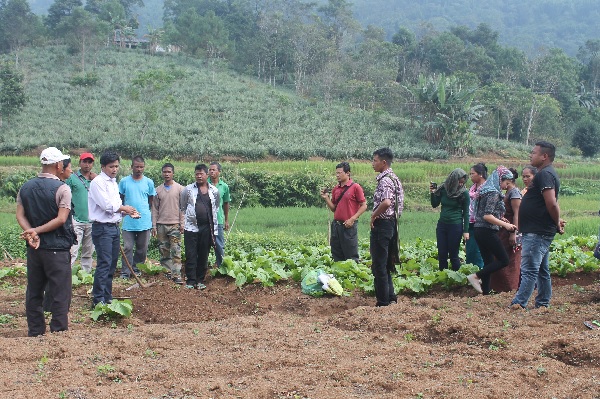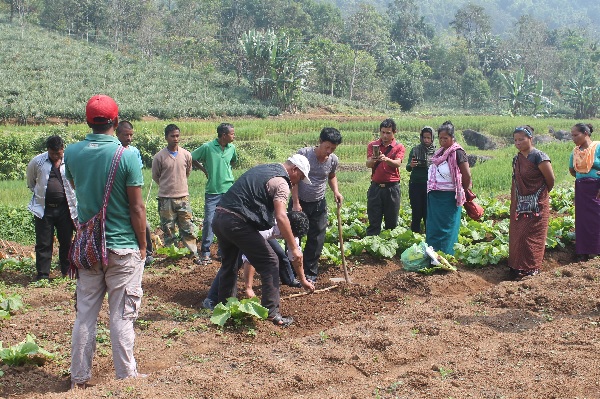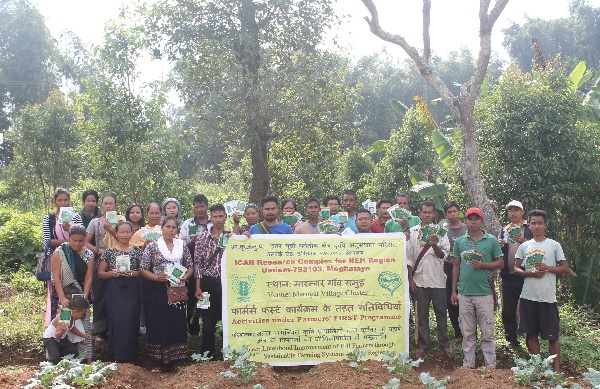Field Demonstration cum Input distribution on ‘Cultivation of Cole Crops’
A demonstration on ‘Cultivation of Cole Crops’ was conducted under the Farmers’ FIRST Project, ICAR Research Complex for NEH Region, Umiam on 16th October 2018 at Umtham village, Ri-Bhoi District. A total 30 interested trainees/ farmers from villages including Sirikushi, Lalumpam, Umtham, Borgang, Parangang, Nalapara and Mawtnum participated in the program. The main objective of the programme was to disseminate technical knowhow among the farmers on various aspects of nursery raising and package of practices of cole crops. The farmers were exposed to both theory and hands on demonstration of various activities such as seed bed preparation, seed sowing, transplanting, cultural practices, plant protection and harvesting of cole crops. Discussion and interaction was also held simultaneously, revealed that farmers in these villages have been following traditional ways of seedling raising but have never been practices line sowing techniques at nursery. The participants have shown great enthusiasm and eager to learn. Feedback from the participants has shown that such activities will help in improving their livelihood as well as soil, water and nutrient conservation through adoption of improved techniques of nursery raising and package of cultivation. Following demonstrations, seed materials of Cole crops, viz., broccoli (430 g), cabbage (250 g), cauliflower (220 g) and Lettuce (150 g) were distributed to the farmers. The programme was coordinated by Dr. H. Rymbai (Scientist - Horticulture), A. Barman (SRF), I. Swer (Field Assistant), L. Khongrymmai (Field Assistant) and Dr. R. Laha (Principal Scientist & PI, Farmers’ FIRST Project, ICAR Research Complex for NEH Region, Umiam).
Fig 1. Interaction with elders
Fig 2. Lecture on improved techniques of cole crops cultivation
Fig 3. Demonstration on line sowing methods
Fig 4. Hands on training on cultivation of cole crops
Fig 5. Discussion and interaction with farmers/ beneficiaries
Fig 6. Input distribution to farmers of Marngar areas





